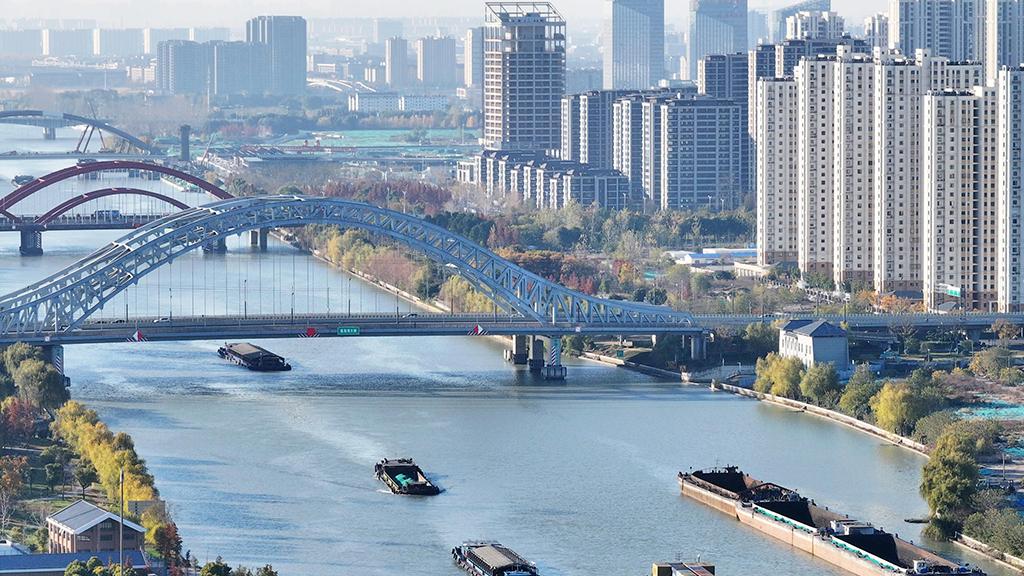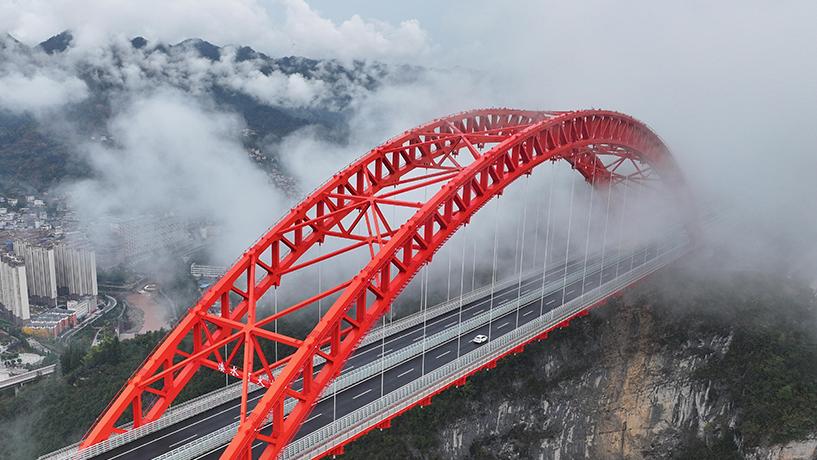Railway can drive Nepal's BRI programs to new height

(Ma Xuejing/China Daily)
With the signing of a memorandum of understanding on China-Nepal cooperation under the framework of the Belt and Road Initiative and the recent deal on BRI framework agreement for project implementation, Nepal is expected to make a major headway in the implementation of the initiative.
Amid several ups and downs including some obscurities, internal political instability and geopolitics, there was some delay in materializing of Belt and Road projects in Nepal, though the two sides agreed in 2018 to intensify the implementation of the MoU on BRI cooperation to enhance connectivity, encompassing vital components such as ports, roads, railways, aviation and communications within the overarching framework of Trans-Himalayan Multi-Dimensional Connectivity Network.
Facing huge infrastructure gaps, Nepal needs the support of neighboring countries, the international community and development partners to develop its infrastructure, and attracting foreign direct investment could be an apt way of achieving that goal. This is crucial because Nepal's aim is to upgrade its economic status from a least-developed country by 2026 and meet the UN 2030 Agenda for Sustainable Development. In this regard, Nepal hopes to attract Chinese investment and Chinese official grants in several sectors.
Chinese investments are expected in infrastructure development, and the energy, information technology and hospitality sectors. As an immediate neighbor of China, Nepal has enjoyed historical and trouble-free ties with China for centuries and, therefore, Chinese businesses will invest in Nepal. Foreign direct investment in Nepal will contribute to the country's economy and help it become a prosperous and happy nation.
The BRI lies at the heart of China-Nepal cooperation, since intensive collaboration on Belt and Road projects will attract high-quality investment and build healthy trade relations between the two sides. More important, the advancement of BRI cooperation in Nepal will facilitate the development of the Nepal-China railway. The development of a railway line between Nepal and China will not only transform landlocked Nepal into a land-linked country but also shift the development paradigm of the whole of South Asia.
Such a railway, which had been less discussed and criticized even before any formal announcement was made, is sure to benefit China and South Asian countries including densely populated India and Bangladesh. More investments in infrastructure mean more business, more funding, faster productivity growth, higher income for people, better connectivity, quality employment opportunities and sustainable development.
Here it is important to mention that other countries should not drag the BRI debate into the abyss of geopolitical maneuvering. Although India is not a Belt and Road partner country and is a bit reluctant, not a naysayer, it has been able to improve education, and people's mobility and livelihoods with funding from the Asian Infrastructure Investment Bank — one of the key financial institutions contributing financially to the BRI's advancement. Nepal, as a BRI signatory country, can explore the Silk Road Fund, the Industrial and Commercial Bank of China, the China Construction Bank as well as the AIIB for funding, though the modality and project finalization remains a major task for the two countries. Pakistan and Sri Lanka are major beneficiaries of Belt and Road cooperation.
The changing global context demands peace and development. Among the five priorities of BRI cooperation including policy coordination, connectivity of infrastructure, unimpeded trade, financial integration, and closer people-to-people ties, connectivity of infrastructure demands more attention in the context of Nepal-China relations, because Nepal is aspiring to benefit from China's miraculous economic development.
To lift all the economic barriers in the region and to benefit almost 3 billion people in South Asia and China, the railway linking China and Nepal will reshape the development paradigm of the Himalayan region. But it is imperative that the parties involved are aware of the sensitivities and vulnerabilities of the peoples in the South Asian region. Only the countries in the region can offer the best solution to the challenges and clear the development bottlenecks.
In short, the Belt and Road Initiative is sure to create immense opportunities for South Asian countries and help them diversify their economic and trade partnerships while minimizing the financial risks in order to achieve sustainable development. But for this, they have to keep geopolitics at bay.
The author is a Nepal-based journalist.
The views don't necessarily represent those of China Daily.
Photos
Related Stories
- High-quality Belt and Road cooperation creates new opportunities for win-win development
- China, Nepal sign framework agreement to promote Belt and Road cooperation
- Interview: BRI delivers benefits to all, says former S. African diplomat
- BRI expected to help countries jointly realize modernization: spokesperson
- BRI, e-commerce boom lift world air cargo market
Copyright © 2024 People's Daily Online. All Rights Reserved.









